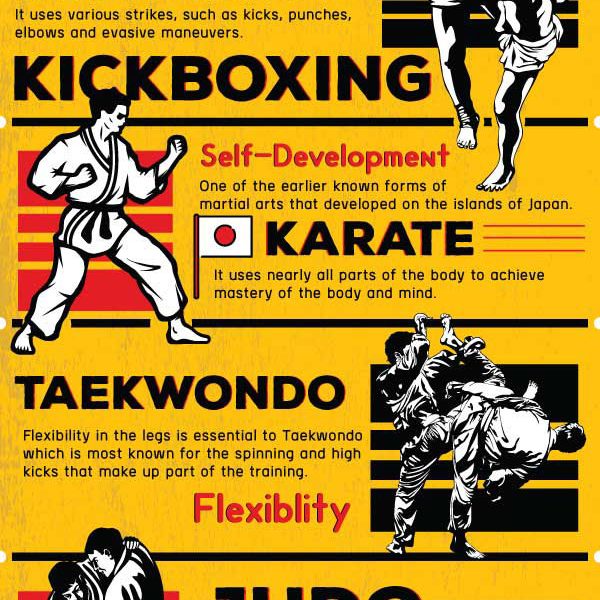The Chronicle And Development Of Martial Arts: An Exam Of Its Historical Beginnings And Advancement Right Into Modern Techniques
The Chronicle And Development Of Martial Arts: An Exam Of Its Historical Beginnings And Advancement Right Into Modern Techniques
Blog Article
Post Written By-Busk Sommer
Step into the globe of martial arts, where ancient beginnings and contemporary methods collide in an electrifying journey of technique and self-discovery.
As you explore the history and evolution of this exciting art form, prepare to be mesmerized by the social influences, technological improvements, and profound philosophy that have formed it over centuries.
From the battlegrounds of old people to the training grounds of today, martial arts have stood the test of time, frequently adapting and expanding.
Each strike, each movement, carries with it the weight of countless years of tradition and wisdom, passed down through generations. This is a story of durability, of warriors who looked for not only physical prowess, yet likewise self-confidence and consistency.
Join us on this impressive expedition as we discover the keys, the tales, and the transformational power of martial arts.
Get ready to be motivated, challenged, and for life altered by the history and advancement of martial arts.
Social Impacts on Martial Arts
As you explore the background and development of martial arts, you'll promptly find the remarkable ways in which social impacts have formed these battle strategies.
From the ancient human beings of China and India to the a lot more recent growths in Japan and Brazil, martial arts have actually been heavily affected by the cultures in which they originated.
For instance, Chinese martial arts, such as Kung Fu and Tai Chi, are deeply rooted in the ideology of Taoism and the idea of Yin and Yang.
On the other hand, Japanese martial arts, like Karate and Judo, mirror the samurai warrior practices and the worths of self-control and honor.
Likewise, Brazilian fighting style, Capoeira, incorporates elements of African dance and music, mirroring the cultural heritage of African slaves in Brazil.
These cultural influences not just offer each martial art its one-of-a-kind qualities however additionally provide a deeper understanding of the historical and social contexts in which they developed.
Technical Improvements and Martial Arts
With the rise of advanced weapons and cutting-edge training tools, you've had the ability to enhance your skills and adjust to the ever-changing battle landscape.
Technological improvements have actually transformed the means martial arts are exercised and taught. Virtual reality simulations now permit you to train in sensible combat situations without the risk of physical injury. best criminal defense -speed cameras record every relocation, allowing you to evaluate and perfect your techniques. Wearable gadgets check your heart rate, breathing, and muscle activation, giving instant comments on your efficiency.
Furthermore, the development of customized equipment, such as resistance bands and dexterity ladders, has allowed you to enhance your speed, toughness, and dexterity. These technical improvements have not only made training a lot more reliable but have also pushed the borders of what is possible in martial arts, enabling you to reach brand-new heights in your method.
The Philosophy and Concepts of Martial Arts
The ideology and principles of martial arts are deeply rooted in shaping your attitude and instilling discipline, emphasis, and regard in your practice.
1. Mindset: Martial Arts instructs you to develop a strong and durable mindset. It allows you to conquer difficulties both on and off the floor covering, pressing your restrictions and being determined when faced with difficulty.
2. Discipline: Martial Arts demands discipline and self-control. Via routine training and adherence to strict rules and techniques, you learn to regulate your impulses and develop a solid job ethic.
3. Emphasis: Martial Arts calls for extreme focus and concentration. By training your mind to be present in the moment, you improve your capacity to react rapidly and efficiently during combat circumstances.
4. Respect: Martial Arts emphasizes respect for oneself, trainers, educating partners, and challengers. It educates you to value the abilities and experiences of others, fostering a sense of camaraderie and gamesmanship.
Conclusion
Congratulations on finishing your journey through the fascinating world of martial arts! Throughout this expedition, you have actually seen the abundant history and remarkable development of these fight methods.
From their ancient origins to the modern methods we see today, martial arts have actually been formed by social impacts.
The assimilation of technology has also played a considerable duty in revolutionizing the means martial arts are taught and exercised in the present day.
Nonetheless, it is very important to remember that martial arts are more than simply physical fight. https://criminal-law-defense-atto87532.blogs100.com/30712791/a-skilled-criminal-defense-lawyer-can-function-as-your-navigator-through-the-complexities-of-the-legal-system-securing-your-legal-rights-throughout-the-procedure-check-out-currently-for-specialist-understandings encompass profound viewpoints and directing principles that go beyond the mere act of combating.
Take https://how-much-does-criminal-la21908.get-blogging.com/30746121/recognize-what-it-truly-suggests-to-work-with-a-criminal-defense-lawyer-in-a-court-room-atmosphere-reveal-the-fact-and-plan-for-any-kind-of-surprises-that-might-arise to assess this anachronistic journey and value exactly how the tradition of martial arts remains to flourish in the present, transcending time and limits.
